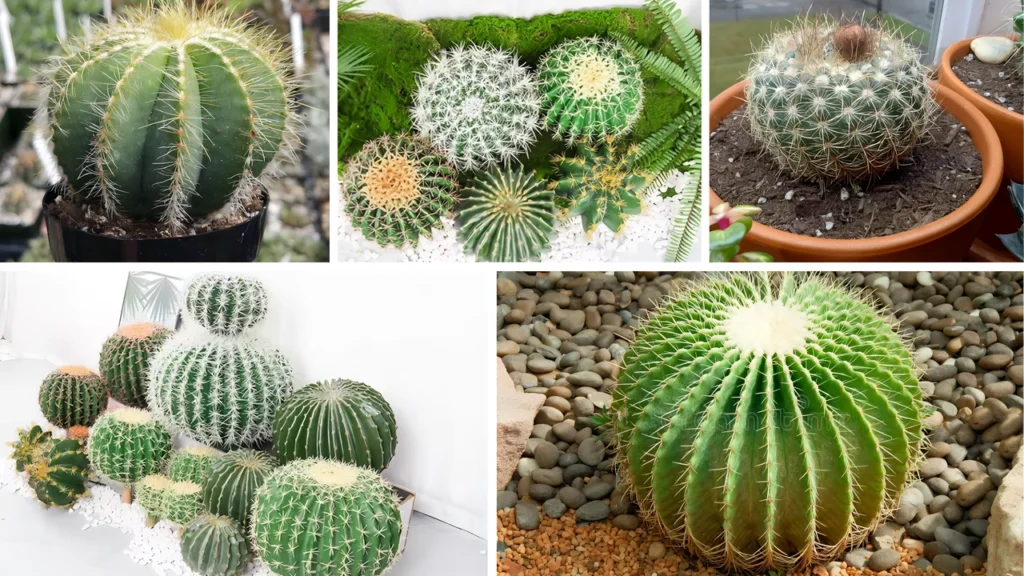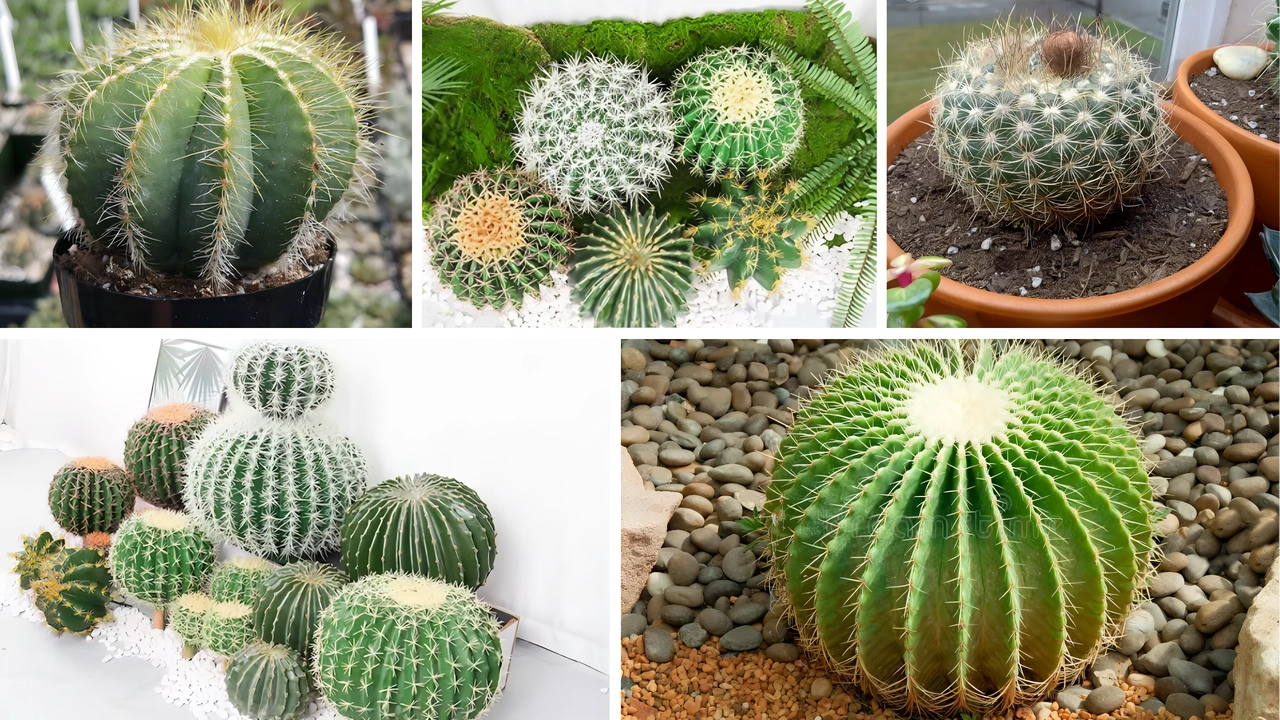Join on WhatsApp
Get the latest updates directly on WhatsApp – motivation, news & more!
Growing a ball cactus at home can be a rewarding experience, especially for indoor plant lovers who admire low-maintenance greenery. Known for its round, ribbed shape and often colorful spines, the ball cactus (from the Parodia or Notocactus genera) is ideal for both beginner and experienced plant owners. In this ball cactus care guide, you’ll learn everything from how to choose the right pot and soil to maintaining its health year-round. Whether placed on a windowsill or in a small container garden, learning how to grow and maintain a healthy cactus at home involves a few simple steps—each critical to its survival and beauty.

Choosing the Right Environment to Grow a Ball Cactus at Home
The first step in this ball cactus care guide is understanding its environmental needs. Ball cacti originate from South America, where they thrive in dry, mountainous regions. To replicate these conditions at home, place your cactus in a bright spot with plenty of indirect sunlight. A south-facing window is ideal. Direct, harsh sunlight can scorch the plant, especially during peak summer. However, a lack of light can stunt its growth. To grow and maintain a healthy cactus at home, striking a balance in lighting is crucial. These cacti also prefer good air circulation, so avoid placing them in closed, humid corners.
Selecting the Best Pot and Soil for Ball Cactus Care
When it comes to how to grow and maintain a healthy cactus at home, choosing the correct pot and soil is non-negotiable. Ball cacti require well-draining soil to avoid root rot, one of the most common issues with cactus care. Use a commercial cactus mix or make your own with a blend of sand, perlite, and regular potting soil. The pot should have drainage holes to ensure excess water escapes. In this ball cactus care guide, it’s essential to emphasize that clay or terracotta pots are preferred because they absorb moisture and help prevent overwatering. Your choice of pot and soil directly affects how successfully your ball cactus will thrive indoors.
Watering Techniques in the Ball Cactus Care Guide
One of the most frequent mistakes in caring for a cactus is overwatering. This ball cactus care guide stresses that ball cacti are drought-tolerant and need far less water than most houseplants. Water only when the top inch of soil feels completely dry. During the growing season (spring and summer), you might water once every two weeks. In the dormant winter months, reduce watering to once a month or less. To grow and maintain a healthy cactus at home, always check the soil before watering and avoid letting water sit in the saucer beneath the pot. Root rot develops quickly in stagnant water.
Feeding and Fertilizing for Healthy Ball Cactus Growth
To successfully grow and maintain a healthy cactus at home, occasional feeding can make a big difference. In this ball cactus care guide, we recommend fertilizing during the growing season with a diluted cactus-specific fertilizer. Look for a low-nitrogen formula with higher phosphorus and potassium to encourage blooming and strong root development. Feed once a month from early spring to late summer, then stop during fall and winter. Overfeeding can lead to weak, leggy growth or even harm the plant, so follow label instructions closely. Proper nutrition helps your ball cactus flourish and may even produce beautiful yellow, red, or pink flowers.
How to Repot and Grow a Ball Cactus at Home
Even in this ball cactus care guide, it’s important to note that while ball cacti grow slowly, repotting every two to three years is beneficial. When roots begin to show through the drainage holes or the cactus becomes top-heavy, it’s time to repot. Choose a container one size larger and follow the same potting guidelines mentioned earlier. Carefully remove the cactus using gloves or tongs to avoid injury, gently shake off excess soil, and inspect for any signs of rot or pests. Repotting helps maintain a healthy cactus at home by refreshing the soil and giving roots more room to breathe and expand.
Preventing Pests and Diseases in Ball Cactus Care
No ball cactus care guide would be complete without discussing pests and diseases. Common issues include spider mites, mealybugs, and fungal infections. To prevent infestations, inspect your cactus regularly and isolate any infected plants. You can treat minor pest problems with rubbing alcohol applied using a cotton swab. Fungal infections usually arise from overwatering or poor ventilation. To grow and maintain a healthy cactus at home, always use clean tools, avoid misting the cactus, and ensure proper drainage. Regular monitoring and good hygiene will keep your ball cactus vibrant and problem-free.
Encouraging Flowering When You Grow a Ball Cactus at Home
One of the most rewarding aspects of this ball cactus care guide is helping your cactus bloom. Ball cacti are known to flower in spring or summer, producing small, vibrant blooms on the crown of the plant. However, flowering only occurs when all care conditions are ideal. Sufficient light, proper dormancy in winter, balanced watering, and appropriate feeding are all critical. To grow and maintain a healthy cactus at home that blooms, ensure your plant gets a rest period during winter with minimal watering and cooler temperatures. This seasonal stress mimics its natural habitat and encourages flower development.
Ball Cactus Winter Care: How to Maintain a Healthy Cactus at Home
Caring for a ball cactus in winter differs significantly from summer. This ball cactus care guide highlights that ball cacti enter a dormant phase during colder months. At this time, reduce watering drastically and move the plant away from cold drafts or frosty windows. Keep it in a bright, cool room, ideally around 50–60°F (10–15°C). Do not fertilize during this period. To successfully grow and maintain a healthy cactus at home, understanding and respecting its natural dormancy cycle is essential. Providing rest ensures vigorous growth and potential blooming in the following season.
Propagation Tips: How to Grow More Ball Cacti at Home
Learning how to multiply your collection is a valuable part of this ball cactus care guide. Propagation can be done through offsets or seeds. Many ball cacti produce small pups or offsets at their base. These can be removed with a clean, sharp knife and allowed to callous for a few days before planting in dry cactus mix. Seeds can also be germinated, though they require patience and consistent conditions. To grow and maintain a healthy cactus at home, always propagate during the warm season and avoid watering the new plants immediately to prevent rot.
Troubleshooting Common Issues in Ball Cactus Care
Even with a detailed ball cactus care guide, challenges may arise. Yellowing may indicate overwatering, while shriveling can suggest underwatering or root damage. A soft, mushy cactus is often a sign of rot. To grow and maintain a healthy cactus at home, act promptly. Remove the plant from its pot, inspect the roots, trim off any mushy parts, and repot in fresh, dry soil. Adjust your care routine to avoid recurring issues. Remember, observation is key—most cactus problems develop slowly and can be prevented with attentive care.
Ball Cactus Care Guide Summary: How to Grow and Maintain a Healthy Cactus at Home
By following this complete ball cactus care guide, you can confidently grow and maintain a healthy cactus at home year-round. From choosing the right environment and soil to mastering watering techniques and identifying potential problems, each step contributes to a thriving, attractive plant. Ball cacti are among the most charming and resilient succulents, perfect for sunny indoor spaces. With patience and care, your cactus may reward you with stunning blooms and a long lifespan. Whether you’re a beginner or an experienced gardener, this guide equips you with the tools and knowledge needed to enjoy a beautiful ball cactus in your living space.


